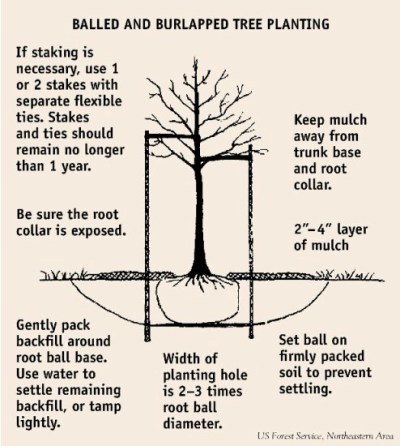Honor Earth Day by Planting a Tree
Trees offer us so many benefits, it’s hard to list them all in one blog post! Trees absorb air pollutants, offer shade that can reduce cooling costs, provide habitat and food for wildlife, and slow stormwater run-off.
But did you know trees can save you money and add value to your home? A report from the USDA Forest Service indicated trees added more than 18% to the average sale price of a suburban residence. Another study by American Forests reports homeowners who properly place trees in their landscape can save up to 56% on daytime air conditioning!
April 22 marks the 41st anniversary of Earth Day. Why not celebrate by planting a tree? Here are some tips to get you started:
- Consider where the tree will live. Is it sunny, shady, or a bit of both? Is it wet, dry, or in between? Is the soil sandy or heavy clay? Not all tree species are able to adapt to a range of soil and sunlight conditions, so these factors are important in choosing a tree that will thrive in the location you’ve selected.
- Decide which species to plant. Good choices are native tree species that are growing well in nearby woodlands with similar habitat features. Natural Lands Stewardship Handbook for Natural Lands in Southeastern Pennsylvania (available for purchase in hardcopy or for a free download) provides a list of nature tree species, their habitat preferences, and the wildlife that benefit from them.
- Find a nursery that sells native tree species that are not hybrids or cultivars, and preferably that are grown from local seeds or cuttings (several nurseries are listed in the above-referenced Stewardship Handbook). If possible, select trees that are six to eight feet tall to help ensure that they can “out compete” invasive plants and that some of their foliage and buds are above the reach of browsing deer. Container trees are easier to plant and have a higher survival rate than bare-root trees.
- Dig, plant, stake, water, and mulch. Refer to the diagram below developed by Northeastern Area of the U.S. Forest Service for guidance about how to plant a balled-and-burlapped tree. Be sure to water well at the time of planting and monitor the planting frequently for the first summer, watering when conditions become dry.
- Protect newly planted trees from deer browse using tree shelters for plants less than six feet in height. Install tree wraps to protect trees over six feet in height.

